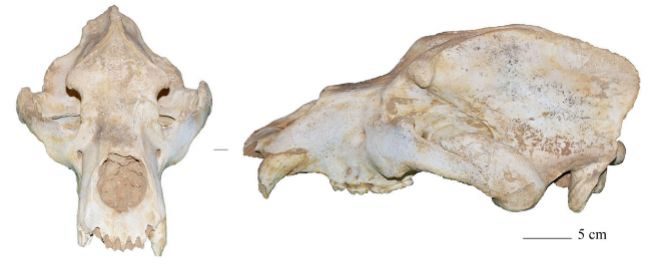- Evolution: The cow will be the largest mammal on Earth in 200 years
- Madrid.https: //www.elmundo.es/elmundo/2013/04/30/ciencia/1367344120.html
For tens of thousands of years, the imposing cave bear ( Ursus spelaeus ) roamed through the territory we call Europe today. This is evidenced by the abundance of fossils of these animals found in numerous sites, including the cave of l'Arbreda, in Girona. He lived with other species of megafauna no less impressive: mammoths, woolly rhinos, felines with saber teeth ... But, as suggested by a new international study with Spanish participation, it was our ancestors who put the cave bear against the ropes.
The research, published this week in the journal Scientific Reports , links the sharp decline that the cave bear experienced 40,000 years ago with the spread of modern humans in Europe, which coincided with the decline of this species of bear. He also notes that this decline in the population of these giant bears was prior to the stage of climate cooling that took place 30,000 years ago.
As explained to EL MUNDO Verena Schuenemann, co-author of the work, "previous archeozoological studies had already found evidence that modern humans hunted cave bears: fragments of stone tools in cave bear bones and marks of bone cuts."
Their conclusions are based on the results of genetic analyzes performed on fossils of cave bears found in 14 sites in Switzerland, Poland, France, Spain, Germany, Italy and Serbia . Specifically, they rebuilt the mitochondrial genomes of 59 cave bears from bones collected in those places. These genomes were subsequently compared with 64 other genomes obtained in previous studies with the aim of shedding light on how different populations lived and how their migrations occurred throughout the upper Pleistocene (between 126,000 and 12,000 years ago).
Up to 3.5 meters high
"Cave bears lived in Eurasia during the middle and upper Pleistocene. Their average size was between 2.7 meters and 3.5 meters high, which means they were 30% larger than modern brown bears. Their weight half would be around 400-500 kilograms, "explains the WORLD Verena Schuenemann, a researcher at the universities of Tübingen (Germany) and Zurich.
The cave bear, Schuenemann adds, followed a strictly herbivorous diet and it is unknown if he had predators among megafauna animals that lived at that time.
By means of the genetic comparison of these genomes, they identified five main lineages originating from a common ancestor 451,000 years ago and which would have dispersed throughout Europe, indicating that the distribution of the cave bear was more complex than previously thought.
Regarding its extinction, the scientist explains that radiocarbon tests indicate that it took place between 28,000 and 26,000 years ago, although a small amount of later fossils have been found. "In our study, we discovered a drastic decline in the cave bear population 40,000 years ago, coinciding with the spread of anatomically modern humans in Europe. Its population had remained stable before, even during several periods of climate cooling."
Scientists believe that human hunting had a key role in the decline of its population . Subsequently, the episode of climate cooling that occurred 10,000 years affected their diet, making it difficult to obtain food due to the decrease of the plants they were feeding on, which could have fragmented their population by moving to regions with a milder climate and more plant availability. By disrupting the connectivity between these subpopulations, the study says, humans would have played a decisive role in the extinction of the species.
According to the criteria of The Trust Project
Know more- Science and Health
- science
ScienceIndia successfully sends its second mission to the Moon, the Chandrayaan-2
Environment The current climate crisis is the first global of the last two millennia
Science Why we can't talk about heatwave in Spain despite extreme temperatures

